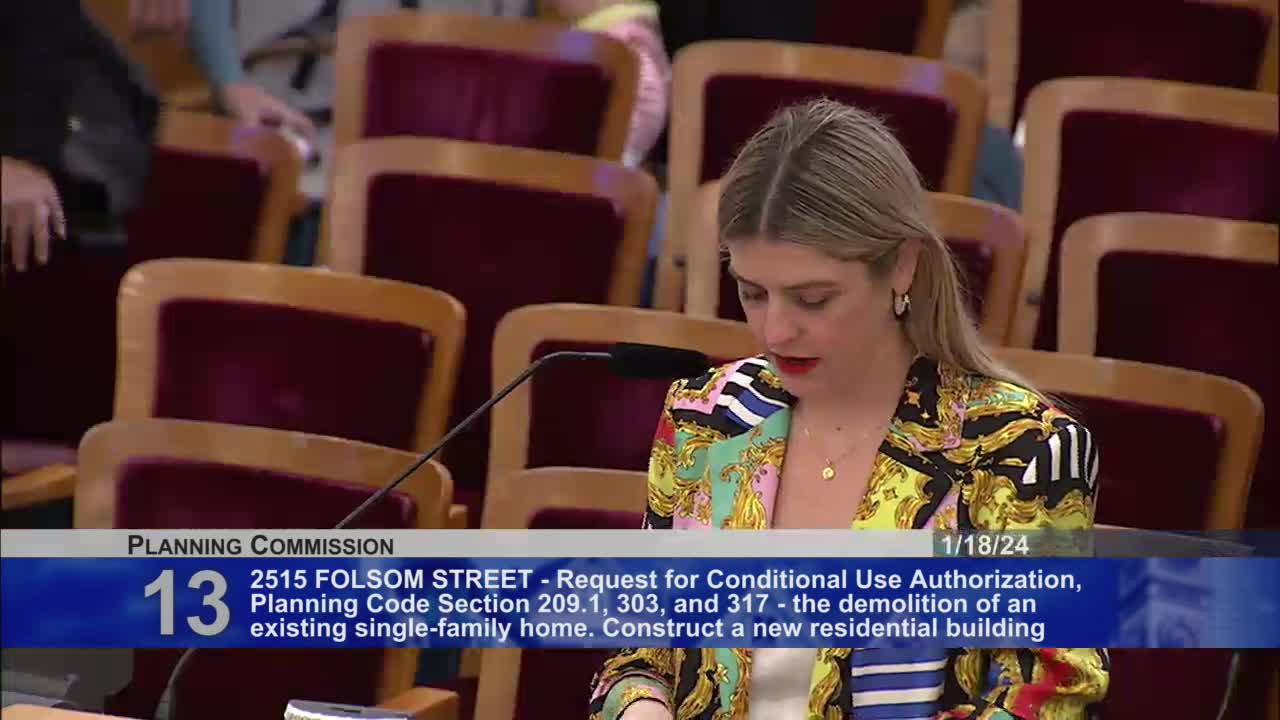San Francisco project clears path for 4 new dwelling units in Mission District
January 18, 2024 | San Francisco City, San Francisco County, California

This article was created by AI summarizing key points discussed. AI makes mistakes, so for full details and context, please refer to the video of the full meeting. Please report any errors so we can fix them. Report an error »

In the heart of San Francisco, a pivotal government meeting unfolded, addressing a proposed residential development that has sparked both enthusiasm and concern among local residents. The project aims to replace a dilapidated single-family home with a modern four-story building featuring four family-sized units, including three three-bedroom apartments and one two-bedroom unit. This ambitious plan, which complies with city codes, has garnered significant community support, evidenced by 27 letters backing the initiative compared to just one letter of opposition.
The proposed building, set to rise on a site currently occupied by a 1,774-square-foot structure, will include private open spaces for each unit and a garage with four parking spaces. The project is strategically located near the bustling Mission and Valencia Street corridors, promising to enhance neighborhood walkability and transit accessibility. Proponents argue that this development is crucial in addressing the ongoing housing crisis in San Francisco, emphasizing the need for family-friendly housing options.
However, not all feedback has been positive. A group of neighbors residing adjacent to the project site has raised concerns about potential shadow impacts and privacy issues. They have requested design modifications, including the elimination of a rear deck and adjustments to a stair penthouse. Despite these requests, the project sponsor has maintained that the design is already accommodating and compliant with safety regulations, asserting that the proposed changes would not significantly impact the overall project.
During the meeting, project representatives highlighted the extensive community engagement that has taken place over the past two years, including pre-application meetings where neighbors voiced their concerns. They noted that the project has been carefully designed to balance the need for new housing with the interests of existing residents. The project sponsor expressed gratitude for the support received and acknowledged the importance of incorporating features like electric bike chargers into the design.
As the meeting progressed, public comments reflected a mix of support and apprehension. Advocates for the project emphasized the necessity of new housing developments in a city grappling with a severe housing shortage. Meanwhile, opponents reiterated their calls for modifications to preserve light and reduce potential impacts on their properties.
The outcome of this meeting could set a precedent for future developments in the area, as San Francisco continues to navigate the complexities of urban growth and community needs. With the project now under consideration, the city stands at a crossroads, balancing the urgent demand for housing against the rights and concerns of its residents. As discussions continue, the community watches closely, hopeful for a resolution that honors both progress and preservation.
The proposed building, set to rise on a site currently occupied by a 1,774-square-foot structure, will include private open spaces for each unit and a garage with four parking spaces. The project is strategically located near the bustling Mission and Valencia Street corridors, promising to enhance neighborhood walkability and transit accessibility. Proponents argue that this development is crucial in addressing the ongoing housing crisis in San Francisco, emphasizing the need for family-friendly housing options.
However, not all feedback has been positive. A group of neighbors residing adjacent to the project site has raised concerns about potential shadow impacts and privacy issues. They have requested design modifications, including the elimination of a rear deck and adjustments to a stair penthouse. Despite these requests, the project sponsor has maintained that the design is already accommodating and compliant with safety regulations, asserting that the proposed changes would not significantly impact the overall project.
During the meeting, project representatives highlighted the extensive community engagement that has taken place over the past two years, including pre-application meetings where neighbors voiced their concerns. They noted that the project has been carefully designed to balance the need for new housing with the interests of existing residents. The project sponsor expressed gratitude for the support received and acknowledged the importance of incorporating features like electric bike chargers into the design.
As the meeting progressed, public comments reflected a mix of support and apprehension. Advocates for the project emphasized the necessity of new housing developments in a city grappling with a severe housing shortage. Meanwhile, opponents reiterated their calls for modifications to preserve light and reduce potential impacts on their properties.
The outcome of this meeting could set a precedent for future developments in the area, as San Francisco continues to navigate the complexities of urban growth and community needs. With the project now under consideration, the city stands at a crossroads, balancing the urgent demand for housing against the rights and concerns of its residents. As discussions continue, the community watches closely, hopeful for a resolution that honors both progress and preservation.
View full meeting
This article is based on a recent meeting—watch the full video and explore the complete transcript for deeper insights into the discussion.
View full meeting
